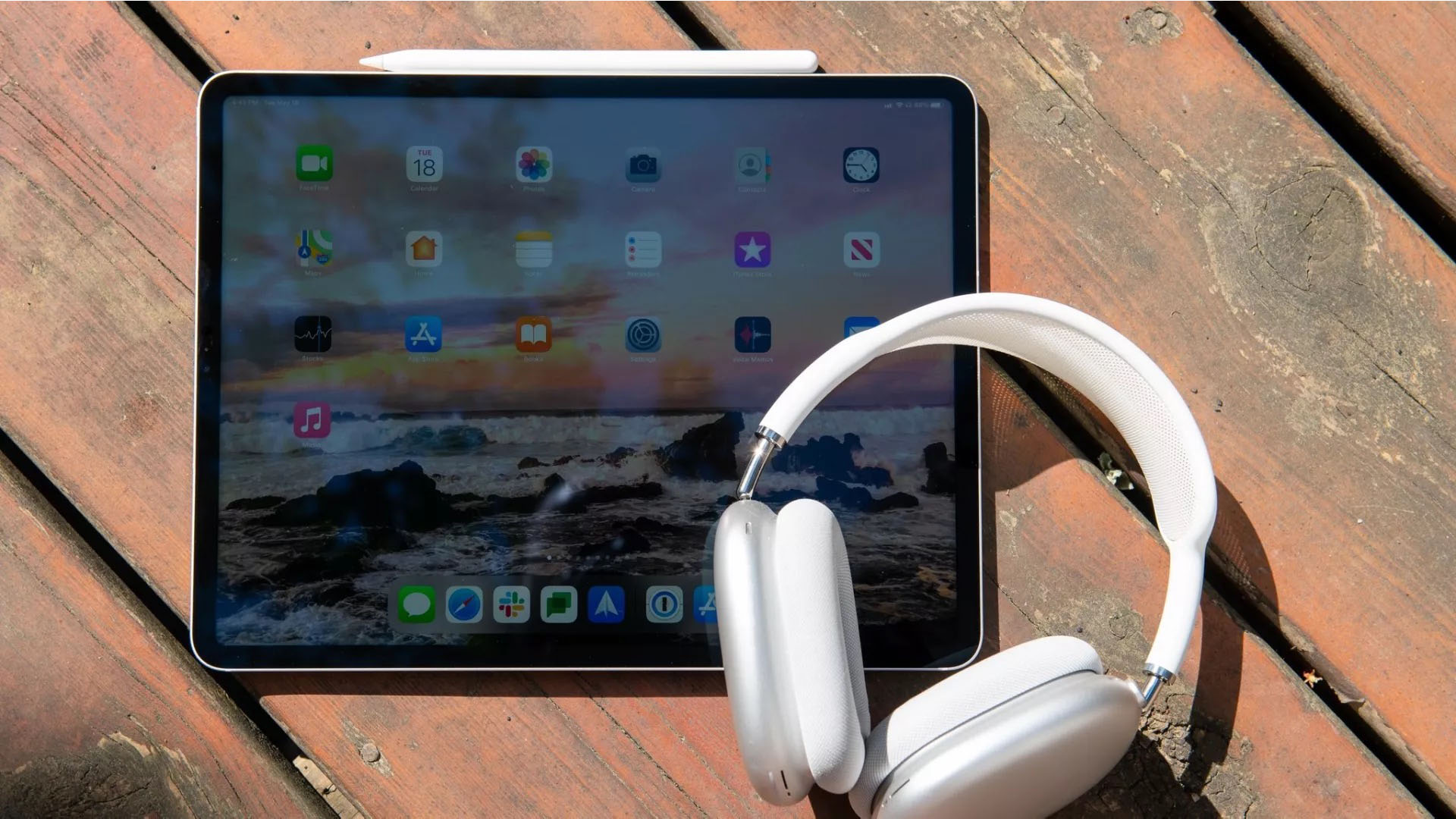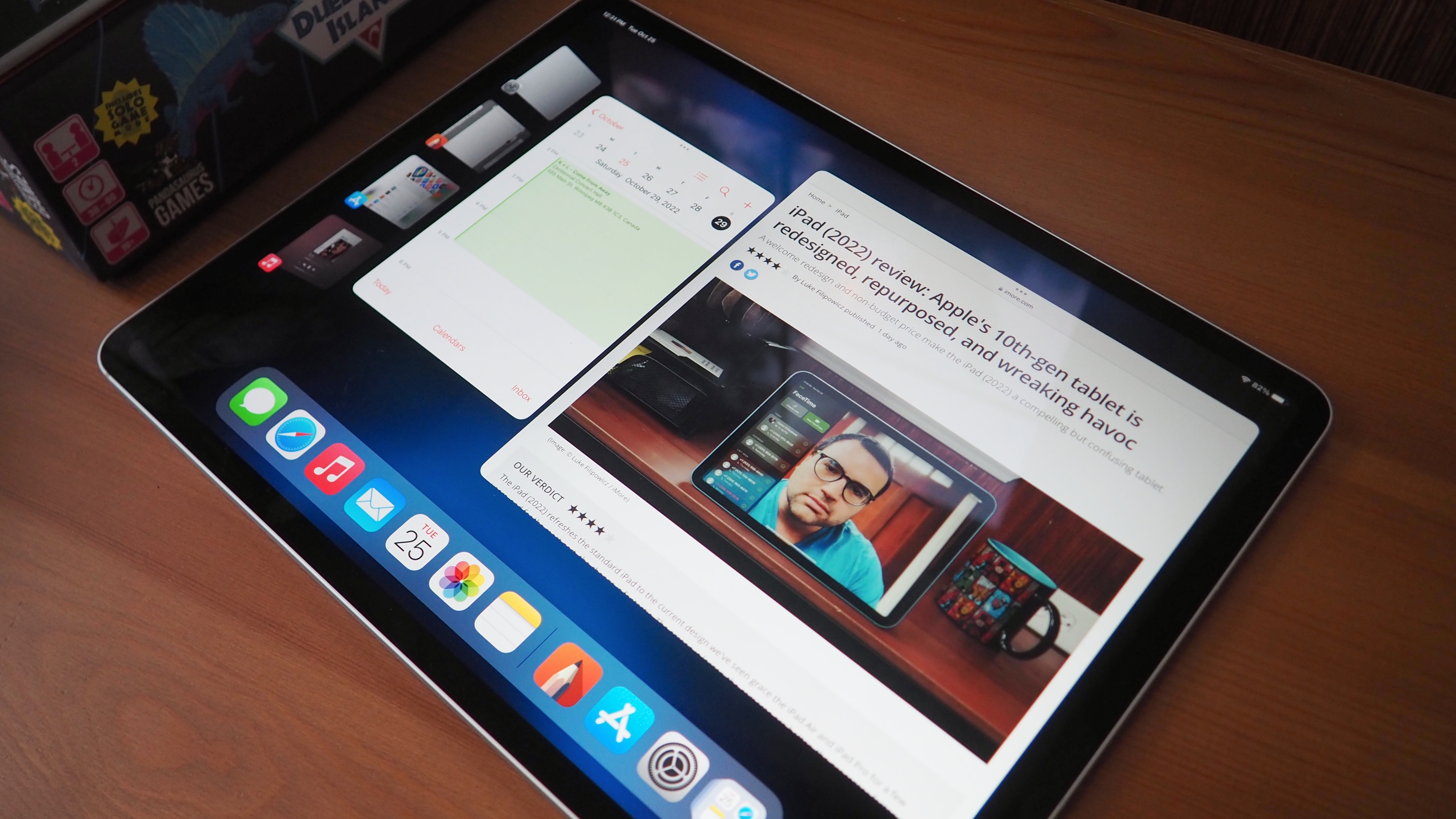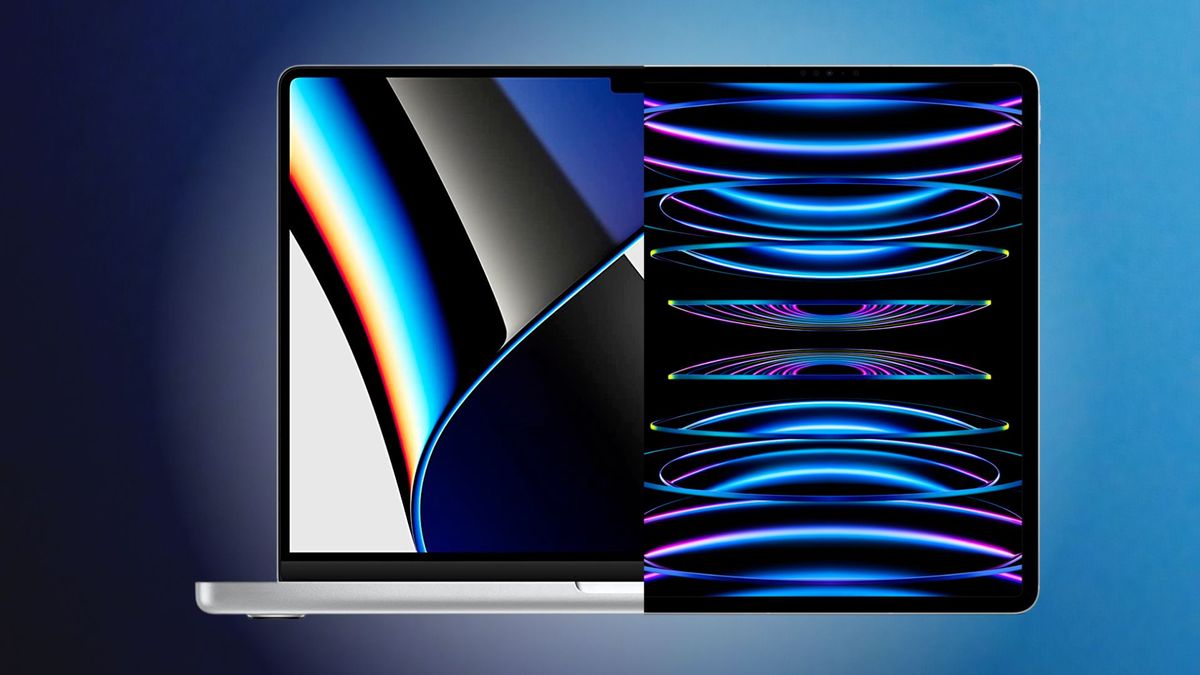When the iPad was first introduced, it was aiming to be all things to all people. In fact, to paraphrase, it was described as “a slate of glass that transforms to what you want it to be”.
In many ways, much of the iPad’s earliest years were spent as “just a big iPhone”, with little in the way of unique features outside of a huge display, at least compared to its smaller sibling.
While Apple has spent the following twelve years (yes, twelve) trying to unshackle that reputation, doing so has actually started to lead the iPad to overlap some of the Mac’s raison d’etre with increasingly similar features and even internals. With the iPad, Apple now not only supports third-party keyboard and mice accessories, but offers its own keyboard and trackpad, and we now have Universal Control for controlling an iPad and Mac with the same peripherals. Crack open the latest in MacBook Airs, iPad Airs and iPad Pros and you’ll find either an M1 or M2 chip, too, as the Apple Silicon Mac revolution continues to find a fresh home in the tablet line up.
So, with things looking more closely aligned between macOS and iPadOS than ever, is there the possibility that one could entirely eclipse the other? Could we see macOS on a tablet?

The curious case of the iPad
It’s a question that more than a few internet commenters have asked over the last few years, especially as the iPad seems mired in an awkward “middle child” role between a rejuvenated Mac lineup and the ever-popular (and big-selling) iPhone.
So why is it even a question? For one, it’s down to the iPad’s stagnation. Apple’s tablet hardware is, and arguably always has been, second to none — no-one can argue against the fact that the M2 iPad Pro is not only the best iPad, but the best tablet in the world. For every purported “iPad killer” (remember the Blackberry Playbook?), Apple’s range is synonymous with a tablet computer. I’ve been in stores around this time of year and heard a (presumably) non-iMore reading customer ask for an iPad, before telling the staff they wanted “the Samsung iPad”. Is Apple ignoring its tablet’s computing potential because the iPad is just so all-encompassing?
Apple’s iPad range is synonymous with a tablet computer.
Whatever the issue, the lineup is confusing. There’s still a base iPad, but it’s the ninth generation, and the tenth generation iPad (2022) costs considerably more. For not too much more you can grab the iPad Air which comes packing the M1 chip, and then there are the Pro variants with a much higher cost but that are arguably a tougher sell feature-wise for the price. We’ve not even mentioned the iPad mini, yet, or that iPadOS has started offering Apple Silicon-exclusive features, or even that the Apple Pencil comes in two flavors and neither are universal.
The case for macOS on the iPad
It’s a little bit of a mess, and there’s definitely an argument that the iPad range is due a full-fledged reboot now its packing Apple Silicon, but that’s not to say Apple hasn’t been advancing things.
I mentioned keyboard and mouse support earlier, and both feel like core parts of iPadOS now, whether you’re using Apple’s pricey keyboard or not. The biggest step, in a variety of directions and in varying stride lengths, has been with multitasking.

The iPad has offered a variety of multitasking options over the years, but the addition of Stage Manager in iPadOS 16 may be the biggest indicator that the lines between the iPad and the Mac aren’t as solid as they once were. With flexible window-resizing (at least when it’s working properly), it’s closer than ever to a Mac-like experience, but feels infinitely more useful with a trackpad or mouse.
Still, true window use on an iPad feels revolutionary when you get it under your fingers, but the elephant in the room is that the same functionality rolled out for macOS Ventura at the same time as Apple seemingly unifies the two platforms or at least brings them closer together.
MacOS itself is hardly new tech, either, but Apple Silicon has breathed new life into a system iterated on year after year for well over a decade. Could the M1 and M2 change lead to a new future for even the basic iPad?
Stage Manager in iPadOS 16 may be the biggest indicator that the lines between the iPad and the Mac aren’t as solid as they once were
There’s an argument that the array of screen sizes may hold that notion back, but with Apple reportedly working on an even larger iPad (rumored to be an iPad Pro…Pro), could there be dual-boot functionality between macOS and iPadOS? Using Ventura on a screen smaller than 11 inches, at least without sizeable efforts made to retool things, sounds more than a little nightmarish.
The case against
So, what are the reasons to believe it won’t happen? They’re numerous, and suggest Apple is unlikely to do so. For one, the aforementioned confusion about the iPad lineup is difficult enough when it comes to peripherals and features, but can you imagine trying to work out which iPad to buy if you want a macOS experience?
Computers, even laptops, can pack more into a larger space, bringing the iPad’s lack of ports squarely into focus. The Smart Connector for the Magic Keyboard is great, but it’s hard to see an iPad coming out of the box with more than one USB-C port.

And then, finally, there’s the iPad’s ease of use. I love macOS as a powerful, flexible platform that’s almost endlessly customizable, but it’d be fair to say your average iPad user isn’t looking to spend time tweaking settings, building automations, and more. The iPad follows through on the “it just works” marketing by being able to be set up within 5 minutes and offering access to an incredible number of apps thereafter. Would it be as popular if it jumped straight into macOS?
macOS would need an almost entire overhaul to work in a touch-first setting.
I think macOS would need an almost entire overhaul to work in a touch-first setting, and even then it feels like it’d be “macOS Lite” because it seems highly unlikely Apple would throw open the iPad to side-loading as is possible outside of the App Store on macOS.
A look over the fence (or through the window)
Another point of consideration is Windows’ move to 2-in-1 tablets with keyboard attachments. Microsoft’s Surface Pro tablets are certainly popular, but is that for their functionality as a tablet, a laptop, or their capacity to do a decent enough job of both?
Windows has incorporated touchscreen elements for years now, but even so, it was hard to recommend over just snapping on a keyboard for getting “real” work done. Could Apple offer an iPad that becomes a Mac when you attach the Magic Keyboard? It’d be a hell of a way to justify the $300 (and upward) accessory.
In conclusion, though, I think some kind of bastardised version of macOS being put onto an iPad just feels like too much of a half-step to suit any party, be that Apple or the end user.
Unless the rumoured “big iPad” has a handful of ports and a keyboard to match, it feels like the iPad and the Mac will remain separate for quite a while longer.
